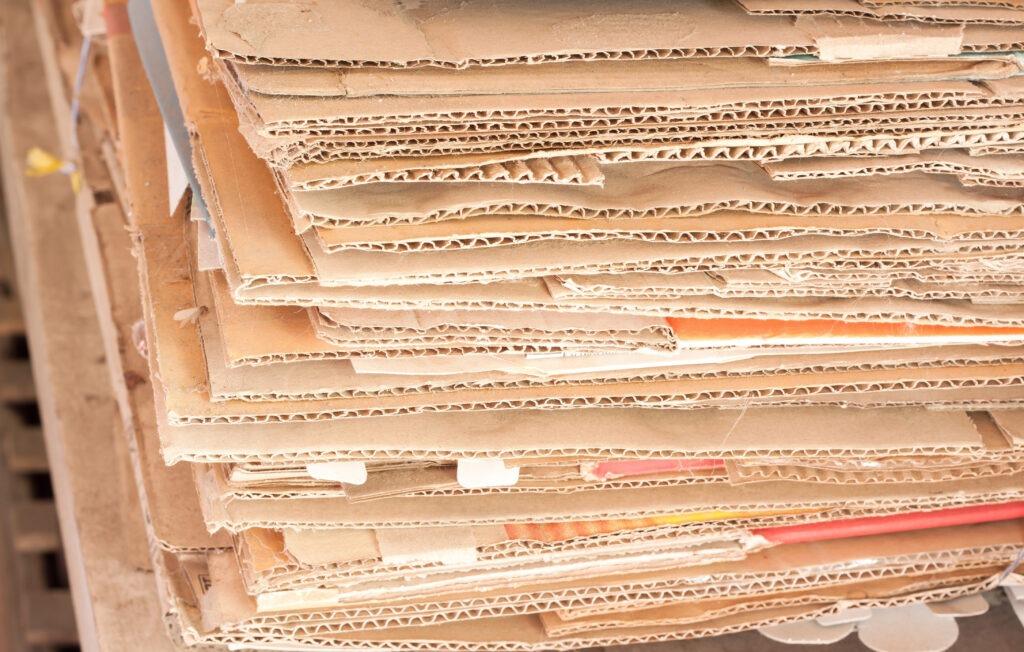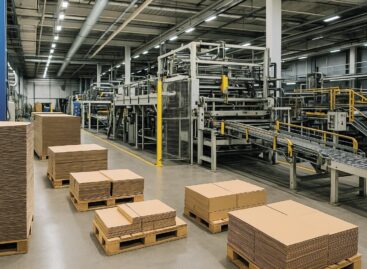Corrugated cardboard could revolutionize contemporary art
Corrugated cardboard not only leaves an 80 percent smaller ecological footprint than traditional materials, but due to its 92 percent recycling rate and spectacular usability, it has become the new favorite of exhibition spaces, stages and film studios. The world’s annual production of 160 million tons now means not only logistical but also creative growth. According to Zsolt Miklós, CEO of Rondo Hullámkartongyártó Kft., sustainability is not about compromises, but about recognizing new opportunities.

Sustainability is no longer just an economic or industrial endeavor, but also an aesthetic and social stance. In contemporary art, the approach that places the use of materials on an environmentally conscious basis is increasingly visible. One of the most exciting examples of this is the growth of corrugated cardboard in everything from art installations to set construction.
The sustainability footprint of art installations can be reduced by up to 80 percent by using corrugated cardboard – especially compared to traditional materials (metal, wood, plastic). Cardboard is not only significantly lighter, but also offers lower transportation costs, a smaller ecological footprint and faster decomposition.
Meanwhile, the recycling rate of cardboard-based packaging in Europe exceeds 92 percent – the highest among packaging materials. More than 160 million tons of corrugated cardboard are produced worldwide each year, and while it remains a key player in logistics, it is increasingly appearing in exhibition spaces, community spaces and film productions.
In addition to the environmental benefits, corrugated cardboard also offers an energy-saving alternative. Up to 4,000 kWh of energy can be saved during the production of one ton of recycled cardboard – this is equivalent to the consumption of a European household refrigerator for more than 10 years.
Zsolt Miklós, Rondo Hullámkartongyártó Kft. According to its managing director, sustainability is not about compromises, but about recognizing new opportunities. “As manufacturers, we are particularly proud that more and more young creators are rediscovering this material – and that in this process, the domestic industry can also become a source of inspiration,” the expert said.
Related news
Munkácsy’s Ecce Homo painting is being built from LEGO bricks in Debrecen
🎧 Hallgasd a cikket: Lejátszás Szünet Folytatás Leállítás Nyelv: Auto…
Read more >New standards and new directions in cardboard packaging
🎧 Hallgasd a cikket: Lejátszás Szünet Folytatás Leállítás Nyelv: Auto…
Read more >Boxes and experiences
🎧 Hallgasd a cikket: Lejátszás Szünet Folytatás Leállítás Nyelv: Auto…
Read more >Related news
Akcenta: The Hungarian economy returned to growth in 2025, risk management will come to the fore in 2026
🎧 Hallgasd a cikket: Lejátszás Szünet Folytatás Leállítás Nyelv: Auto…
Read more >At profit temperature – 3 climate trends reshaping the economy
🎧 Hallgasd a cikket: Lejátszás Szünet Folytatás Leállítás Nyelv: Auto…
Read more >BMI: The manufacturing industry ended the year with sustained expansion
🎧 Hallgasd a cikket: Lejátszás Szünet Folytatás Leállítás Nyelv: Auto…
Read more >







